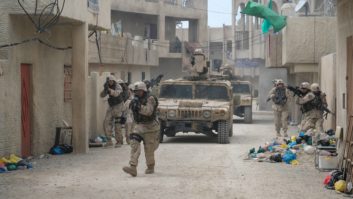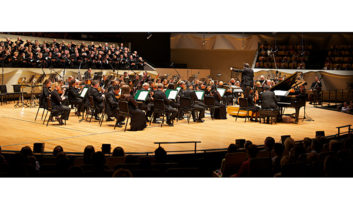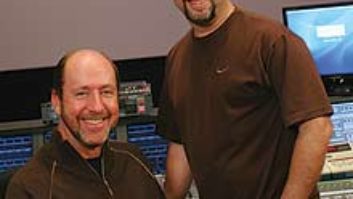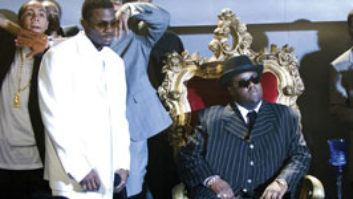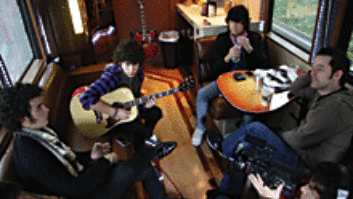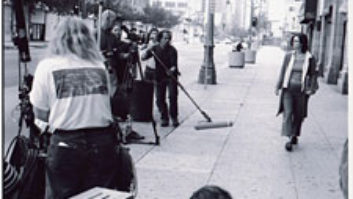Clarity and detail are often sacrificed when a post-production schedule gets as tight as it was on The Patriot. In the middle of May, with the film’s release just six weeks away, the team was wrapping up the premixes on three stages at Sony. O’Connell finished up the dialog on the William Holden Theatre a day later, as Russell was honing gunshots and horses in the effects premix for reel 8AB in the new Burt Lancaster Theatre across the hall. Meanwhile, pinch hitters Greg Orloff and Chris Carpenter, were tackling the Foley in reel 7 on the reconditioned and sweet-sounding main stage (and O’Connell’s and Russell’s true home), the Cary Grant Theatre.
Less than four weeks earlier, the Cary Grant had scaffolding from floor to ceiling. A brand-new Harrison MPC was installed in late April, in time for Foley to shake down the room, and on Friday, May 19, the day before the final mix was to begin, producer Dean Devlin and O’Connell made the decision to switch from the William Holden to the Cary Grant. A small army of engineers and assistants began moving workstations and setting up, while O’Connell and Russell laid out the board and reviewed the Harrison’s new features with Carpenter. The final began the morning of May 20. The drop dead for the print master was June 9.
That means there was only a little more than five weeks, from premix to print master, on a 9AB reel movie (three hours). Even by current standards, that’s a tight schedule. “This movie has everything but time,” says supervising sound editor Per Hallberg, who began on the film in February after finishing up Gladiator. “A great story, great acting, great adventure, great photography-everything that you need in a movie except time for us at the end. I work with a really tight crew that works together all the time, but we can add people in editorial and work six or seven days a week. When you come to mixing, however, there is nowhere left to go, and it’s not because the mixers aren’t fast. This is a massive job, and we wanted Kevin and Greg to do as much of the predubbing as possible to keep consistency and let them know the material. We needed their taste in the predub.”
O’Connell and Russell handled all of the effects and dialog premixing, and, like Hallberg, they stress the collaborative effort that brought the picture out on time. “We’ve been fortunate to have a dream team of support on this film,” O’Connell says. “Chris Carpenter and Greg Orloff premixed all the Foley, and we know that it will lay right in at the final. Then Steve Maslow and Sergio Reyes helped out with some additional hands on sheets and faders. Excellent support. Also, the film editor, David Brenner, is a huge part of how this movie sounds and he plays a major role in the mixing process. We had the benefit of temp-dubbing the movie with him and working out a template of how the final will be structured.
“When we started this picture, it was going to be one stage, one crew,” O’Connell recalls, “so I’d like to acknowledge the people at Sony-from Gary Martin to Jim Honore’s office, straight through to Michael Kohut and Richard Branca-for making this possible and dealing with the juggling of schedules.”

